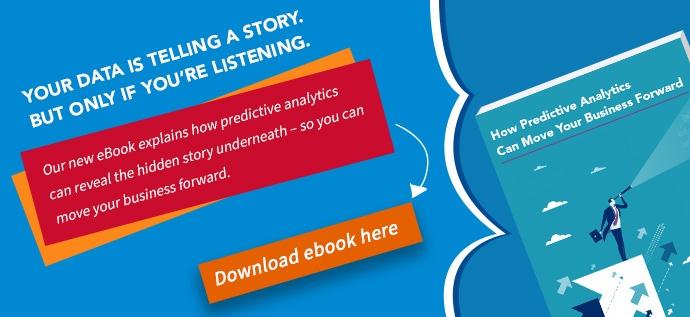
After years of hype about employee engagement with little progress to show for it, we understand why some might regard the noise about human capital analytics to be hype. In addition to that skepticism, lack of progress in people analytics is reinforcing the perception. In spite of years of urging by industry analysts and thought leaders, HR has made little progress, but promising signs are emerging.
Deloitte’s 2016 report is more optimistic, citing a doubling in the percentage of companies capable of developing predictive models, from 4 percent to 8 percent. Their new conclusion is that HR is “turning the corner.” CEOs are reporting better results from HR.

When people ask us about the future of predictive human capital analytics, we say it is the next logical progression in the way we do business. HR leaders have been making predictions based on past and current data for as long as we can remember, but the traditional methods of predictions have been benchmarking, “best practices,” gut instinct, and hope. That is no longer good enough. The competition for people is demanding better tools.
HR is on the cusp of massive change. Adoption of people analytics is gaining momentum, and it won’t be long before human capital analytics becomes a required fundamental competency.
What is holding HR back?
Four primary factors have been holding HR practitioners back.
Siloed thinking -- the flawed premise that HR does “people stuff” and everyone else does business. It manifests itself when HR leaders can speak of outcomes only in trendy or “feeling” terms. We have talked with many HR practitioners who describe themselves as “a people person, not a numbers person.” That concept is beginning to change.
Lack of capability. People analytics is a relatively young concept; expertise has been scarce, but the number of analysts and consultants is growing to meet the demand.
Technology. Robust analytical tools have historically been expensive and hard to use, but now human capital software vendors are packaging user-friendly tools with their platforms. However, the tools they provide are not unique to industries and are not designed for predictive modeling.
Misdirected focus. HR has been focused on proving its value with internal efficiency and effectiveness measures rather than contributing value by impacting the business. That will change as more and more CEOs demand to know how their investment in people pays off.
People Analytics: A Business Necessity
Modern CEOs realize that people are their only sustainable competitive advantage. The demand for people analytics will continue to grow, and HR will need to hustle to catch up.
By themselves, machines, materials, processes, and information do nothing. People create value when they interact with those things and with other people. If people are 70% of your cost and all of your value, why would it not be a fundamental business practice to apply the power of analytics to maximize their net contribution?
PhenomᵉCloud is a comprehensive technology solutions provider committed to empowering businesses to overcome challenges, enhance their workforce capabilities, and achieve superior outcomes.
In its Global Human Capital Trends 2015 report, Deloitte described HR as “stuck in neutral.” In fact, survey results showed a decline in the use of workforce data to predict workforce performance and improvement.


Leave a Comment